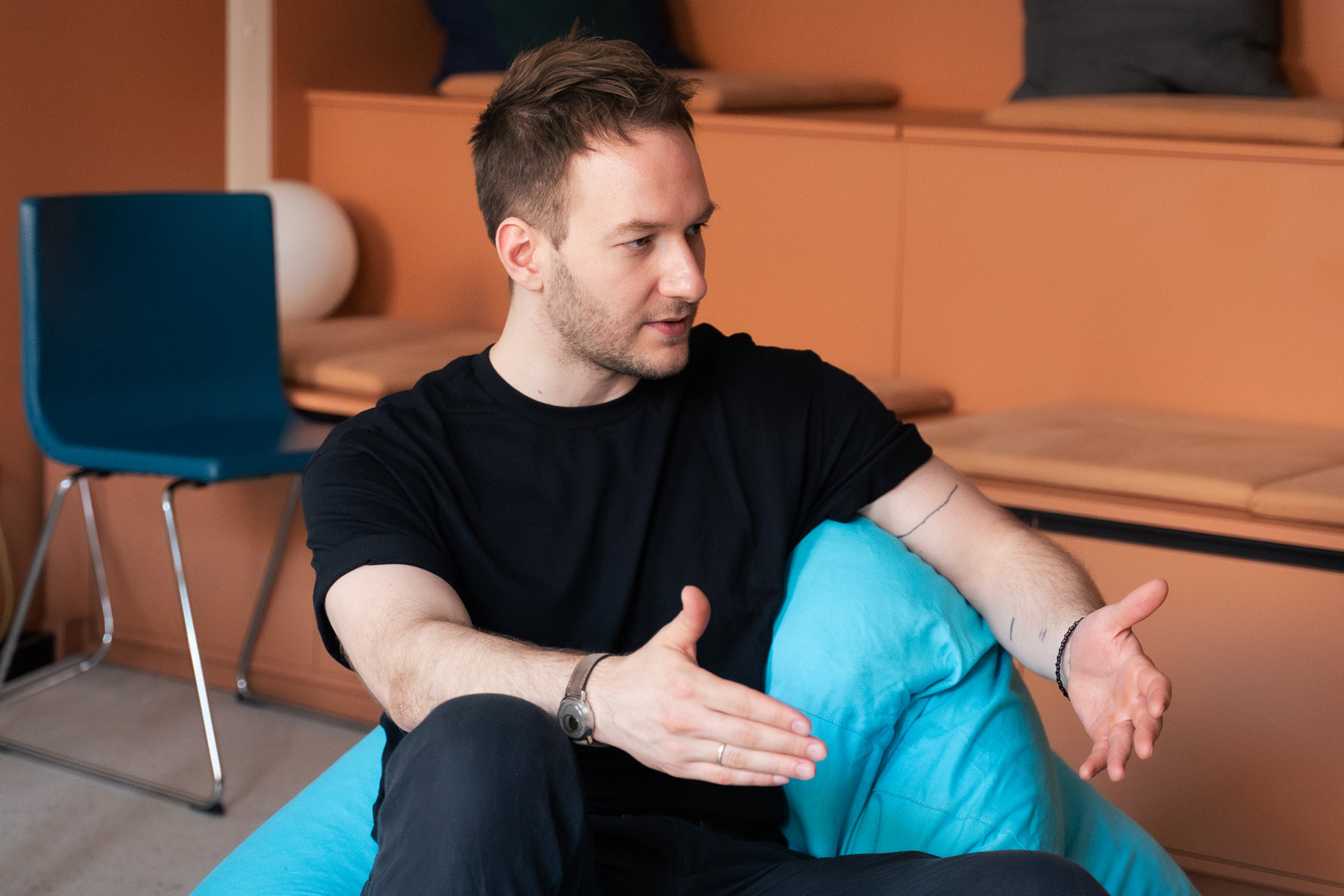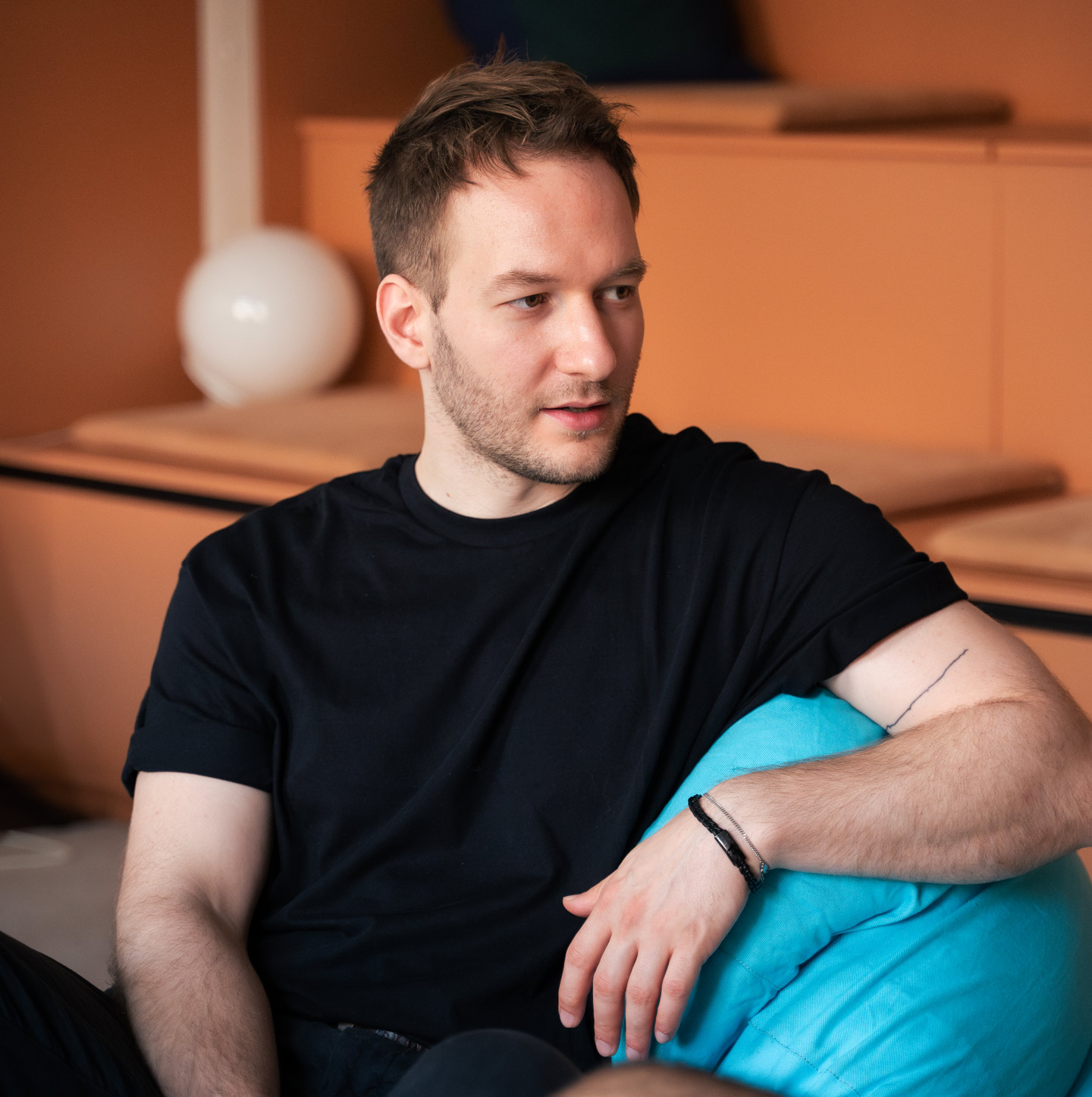In a sun-soaked Valencia office, 2,000 kilometers from Budapest, Spanish artist Marcos Martinez reviews morning renders while his Hungarian colleague Dávid Korándi brews two espressos in our Budapest studio—one for himself and another for Máté, who just sprinted around Margaret Island, Budapest’s famous running spot. It’s 10AM in both cities, but the distance feels both infinite and invisible—a paradox that defines modern creative work at ZOA Studio.
Key Takeaways:
• At ZOA Studio, HR isn’t about rigid processes, it’s about creating a space where talented individuals can grow and self-direct their development.
• Remote work, flexible hours, and non-traditional schedules take precedence over standard four-day work weeks or fixed calendars. Output and well-being matter more than clocking days.
• Instead of surface-level diversity, ZOA focuses on cultural compatibility and hires “T-shaped” generalists who can solve problems and explore multiple roles within the studio.
• With perfectionism baked into creative industries, early intervention and trust-based management prevent burnout.
When Máté Hámori co-founded ZOA two decades ago, HR meant little more than hiring good people and hoping for the best. Fast-forward to today, and we find ourselves navigating a labyrinth that would challenge even the most seasoned multinationals: managing creative talent across countries, preventing burnout in industries built on perfectionism, and maintaining the intimacy of a small team while operating at international scale. “We went from drinking wine together in the canteen when we were four people to coordinating across time zones and visa processes,” reflects Máté, during our conversation in our Budapest headquarters. The question that how do you scale human connection, reverberates far beyond architecture. As creative industries grapple with remote work, talent retention, and existential crisis, our studio approach offers a fascinating case study in unconventional HR thinking.
Below, we unpack our studio’s hard-won lessons on burnout, four-day work weeks, diversity, and the quiet art of spotting red flags during hiring. Most people don’t see it, but the visa applications, the emotional load, and the midnight WhatsApps over relocation stress are making Máté and Dávid work extremely hard. “If we do our job right, no one notices” says Máté. HR is a quiet architecture. It’s what makes the loud moments—a pitch or a breakthrough project—possible. “I think people don’t realize how much time we spend with Máté discussing things no one thinks about,” Dávid adds. “We’re kind of the emotional infrastructure of ZOA.”
The Valencia gambit
The decision to open our Valencia office wasn’t born from expansion dreams but from a stark political reality. “Budapest lost its cool,” Dávid, our soft-spoken HR coordinator, states. When Russia rolled tanks into Ukraine and the Hungarian government launched attacks on LGBTQ+ rights, combined with a general shift toward anti-European rhetoric making headlines in the European press—suddenly, the city that had been magnetic for young Europeans became less appealing. Valencia, with its Mediterranean charm and warm reputation, became our answer. “We needed to stay European,” Máté explains. The strategy worked. Just a couple of months later, talented artists started applying again. Western Europeans are excited about the Valencia option, while our Budapest office continues to attract talent from Hungary, Eastern Europe, and beyond. What began as a tactical escape from our capital’s eroding international allure has evolved into a live A/B test for the future of work.
The 2,000-kilometer challenge
But this geographical solution created an entirely new problem: unity. “Every spontaneous conversation that builds team cohesion is gone,” Máté confesses. What used to happen naturally—regular cross-office visits, shared projects requiring collaboration, video calls that go beyond work updates, and the effort extends to onboarding—now had to become intentional efforts. When we hired Marcos in Valencia, we ensured he met the entire Budapest team within his first months—a logistical puzzle that involves coordinating schedules, flights, and the simple human need to look colleagues in the eye. “Physical presence still matters,” insists Dávid. You can video call all you want, but trust is built when you regularly breathe the same air.
The buddhist monastery approach
Perhaps our most radical HR philosophy lies in how we approach employee development. Máté offers an unexpected analogy: “We operate like a Buddhist monastery.” It’s not as abstract as it sounds. In Zen Buddhism, you arrive with your own questions, and through dialogue with teachers, you find your own answers. “We don’t micromanage or force people to learn. We create an environment where talented people can grow, then trust them to direct their own development.” The monastery metaphor even extends to hiring. Not everyone is ready for this kind of environment. Some people need more structure, more direction. We look for those who thrive in ambiguity—people who learn from mistakes and peer feedback rather than formal training programs. It’s a risky strategy, but so far, it seems to work. Alumni often return as collaborators or remote contributors, and our reputation for nurturing talent has become a recruitment tool in itself.
The diversity paradox
When conversation turns to diversity—that trending buzzword in contemporary HR—our leadership reveals a nuanced position that defies easy categorization. “Surface-level diversity doesn’t interest us,” Máté states. We don’t focus on national identity, or on any form of ethnic or political affiliation. But cultural compatibility is crucial. “We’re absolutely supportive of diversity, but it’s not a driving factor. We didn’t hire Mariia because she’s Ukrainian—we hired her because she’s a great artist. And we won’t reject someone because they’re a man or a woman,” Dávid explains. The question is always how a person will thrive in our environment. However, we’ve noticed patterns in team dynamics. Homogeneous groups sometimes develop dysfunctions. It’s a delicate balance: embracing diversity as an outcome while resisting it as a mandate. “We’re like the Roman Empire,” Máté offers with directness. “It was an enormously diverse system—you could come from any background, any culture, any perspective—but you had to buy into the system.”
The generalist advantage
In an industry increasingly obsessed with specialization, we champion the generalist. “T-shaped people,” Máté calls them—those with deep expertise in one area and broad curiosity about everything else. “A lighting specialist who understands architecture creates better images than someone who only knows software,” Dávid explains. A project manager with artistic sensibility communicates with clients in a different way. We’re not looking for someone who can execute one task perfectly; we want people who can solve problems we haven’t even thought of yet. This mindset also shapes our approach to career development. Rather than rigid advancement tracks, we encourage lateral exploration, because someone’s next promotion might move in a completely different direction from their last.
The essential skills
When asked about the most valuable qualities in candidates, our priorities go beyond technical ability. “Curiosity tops everything,” Máté states immediately. Someone who asks why and what if will always outperform someone who simply executes. Communication ranks equally high—not just speaking clearly, but listening actively is essential. This industry evolves constantly: new software, new techniques, new client expectations. We need people who see change as an opportunity, not an obstacle. Technical skills, surprisingly, rank lower. “We can teach software,” Dávid explains. “But we can’t teach passion or perspective.”
Burnout battle
In an industry where perfectionism isn’t just encouraged but essential, burnout lurks like background radiation. “It’s easy to work 14 hours on your project and you can always make an image more perfect,” Dávid notes. In architectural visualization, there’s literally no upper limit to quality. That’s dangerous. Our anti-burnout strategy focuses on early intervention rather than crisis management. We watch for the signs before they become problems. Employees can work when and where they’re most productive, but managers actively discourage overwork. We’ve learned to spot when someone’s heading toward exhaustion, and we intervene. The challenge intensifies during busy periods. This industry has natural waves of intensity. But we can’t let those waves break people.
Four-day work week
When the four-day work week enters conversation—as it inevitably does in any discussion—our response reveals our pragmatic philosophy. “It was on the table,” Máté admits, “but it felt contradictory to how we manage our time here.” The contradiction isn’t philosophical but practical. We already operate on flexibility rather than fixed schedules. If you can skip Monday but work Saturday, or manage your time completely under your control, then limiting it to four days becomes twisted logic. In our reality, a four-day work week already exists—for those who want it. Some people work seven days, some work four. What matters isn’t the days but the hours and the output. We think in working hours and holiday hours, not weekdays and weekends. It’s a distinctly European approach to an American productivity trend. Rather than mandating fewer days, we’ve eliminated the tyranny of the calendar entirely.
Remote work
Our approach to remote work reflects our broader philosophy: flexibility within clear boundaries. “We treat people like adults,” Máté explains. Work from wherever, whenever—just deliver results and stay connected to the team. But we’ve learned that fully remote work can affect company culture. “Trust is a very blurry kind of thing. It builds through shared experiences,” Dávid observes. You can maintain relationships remotely, but human touch is essential. At the studio, small rituals matter—every morning, whoever arrives walks through the office and greets everyone with a fist bump. It’s a simple gesture, but it keeps us connected in a physical, human way. We’ve seen departures where remote work played a bigger role—not because the work suffered, but because the connection weakened. Remote work is encouraged, but periodic office presence is non-negotiable. Some tasks require sitting at the same desk. Some relationships require sharing the same space.
The future formula
Looking ahead, we face the eternal question: how big is too big? “We used to dream of becoming a thousand-person company,” Máté admits. “Now we’re more interested in finding our optimal size.” The goal isn’t growth for its own sake. “We want people to remember their time here as one of the best teams they ever played for,” Dávid explains. That’s harder to achieve with massive scale. Our five-year vision prioritizes deeper relationships, more sophisticated workflows, and higher-quality output. Success isn’t becoming the biggest studio,” Máté reflects. It’s becoming the studio where the best people want to work.
Human algorithm
Perhaps our most radical insight is treating HR as an art rather than a science. “We’re always guessing,” Dávid admits. It would be so nice to see six months into any hire’s future and know what will happen. But then, probably, most of the fun would go. In an age of HR analytics and algorithmic hiring, our intuition-based approach feels almost radical. We trust our instincts, embrace uncertainty, and treat each hire as an experiment rather than a resource allocation. The results speak for themselves: a thriving creative studio that’s retained its soul while operating across continents. In a world obsessed with scaling efficiency, we chose to scale humanity instead.
As our conversation winds down, Marcos sends a message from Valencia—renders approved, deadline met, team dinner planned. Two thousand kilometers away, his Budapest colleagues see the notification and smile. Perhaps that’s the real HR innovation: not managing people across space, but creating spaces where people manage themselves.


